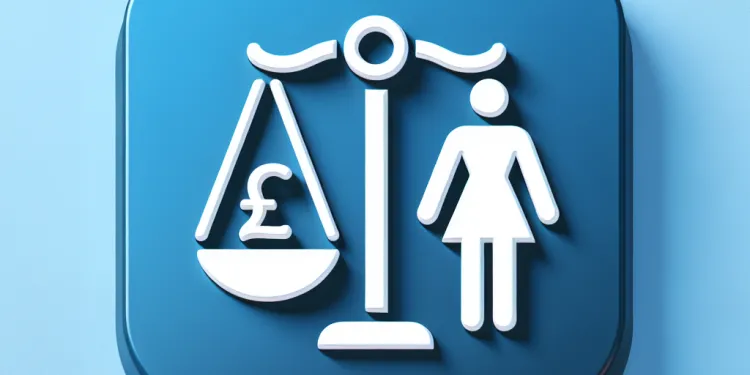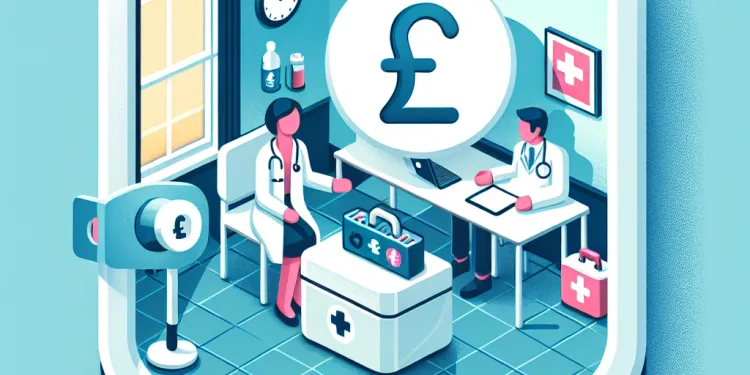
Find Help
More Items From Ergsy search
-

What are the side effects of Ozempic?
Relevance: 100%
-

What are the common side effects of Ozempic?
Relevance: 98%
-

What are common side effects of Ozempic?
Relevance: 96%
-

Is nausea a frequent side effect of Ozempic?
Relevance: 93%
-

Can Ozempic cause serious side effects?
Relevance: 92%
-

How can the side effects of Ozempic be managed?
Relevance: 86%
-

Are there any long-term effects of using Ozempic?
Relevance: 71%
-

What is Ozempic?
Relevance: 64%
-

Can Ozempic be taken with food?
Relevance: 62%
-

What problems is Ozempic known to cause?
Relevance: 62%
-

What is Ozempic?
Relevance: 61%
-

Can Ozempic affect vision?
Relevance: 60%
-

Can Ozempic lead to dehydration?
Relevance: 60%
-

Can Ozempic cause severe gastrointestinal issues?
Relevance: 60%
-

Can Ozempic be used for weight loss?
Relevance: 59%
-

Are there any serious risks associated with Ozempic?
Relevance: 58%
-

How often do you take Ozempic?
Relevance: 58%
-

How does Ozempic work?
Relevance: 58%
-

Is Ozempic safe for everyone to use?
Relevance: 57%
-

Can I take Ozempic with other diabetes medications?
Relevance: 57%
-

What are the side effects of Botox?
Relevance: 57%
-

What are common side effects of Baxdrostat?
Relevance: 56%
-

Are there any common side effects of Mounjaro?
Relevance: 56%
-

Can non-diabetic individuals use Ozempic for weight loss?
Relevance: 56%
-

How does Ozempic help with weight loss?
Relevance: 56%
-

Do I need a prescription for Ozempic?
Relevance: 56%
-

What should I discuss with my doctor before starting Ozempic?
Relevance: 56%
-

What are the side effects of Botox?
Relevance: 56%
-

Is Ozempic suitable for type 1 diabetes?
Relevance: 55%
-

What are the side effects of Aspirin?
Relevance: 55%
-

What are the side effects of Paracetamol?
Relevance: 55%
-

What are common side effects of Wegovy?
Relevance: 55%
-

What are the side effects of bowel cancer treatment?
Relevance: 54%
-

What are the side effects of Ibuprofen?
Relevance: 54%
-

What should I discuss with my doctor before starting Ozempic?
Relevance: 54%
-

What are the common side effects of vaccines?
Relevance: 54%
-

What should I do if I miss a dose of Ozempic?
Relevance: 54%
-

Are there any side effects to the flu vaccine?
Relevance: 54%
-

Does Ozempic cause allergic reactions?
Relevance: 54%
-

Is Ozempic a form of insulin?
Relevance: 54%
Understanding Ozempic and Its Side Effects
Ozempic is a medication commonly prescribed to manage type 2 diabetes. It helps control blood sugar levels by enhancing the body's insulin response. However, like all medications, Ozempic can cause side effects. Understanding how to manage these can improve the treatment experience and ensure better adherence to prescribed therapies. It's important to discuss potential side effects with a healthcare provider and understand the steps that can be taken to mitigate them.
Common Side Effects
The most common side effects of Ozempic are gastrointestinal in nature. These may include nausea, vomiting, diarrhea, stomach pain, and constipation. Such symptoms are often transient and may subside as the body adjusts to the treatment. Other potential side effects include headaches, dizziness, and fatigue. For many patients, these symptoms are mild and manageable but it's crucial to monitor their severity and frequency.
Managing Gastrointestinal Symptoms
To manage common gastrointestinal side effects, consider making gradual dietary adjustments. Eating smaller, more frequent meals rather than large ones can help ease nausea and stomach discomfort. Avoiding high-fat and greasy foods may also reduce symptoms. Staying hydrated is vital, especially if diarrhea is present, to prevent dehydration. For those experiencing severe or persistent gastrointestinal issues, consulting with a healthcare provider is important, as they may adjust the dose or recommend supportive medications.
Addressing Other Side Effects
For headaches, maintaining adequate hydration and ensuring you get enough rest may alleviate symptoms. Over-the-counter pain relievers can also be helpful, but only if advised by a healthcare professional. Dizziness can be managed by standing up slowly from seated or lying positions and avoiding sudden movements. Fatigue can be managed by ensuring adequate sleep, balanced nutrition, and regular physical activity, tailored to individual capability and pharmacological interactions.
When to Seek Medical Advice
While most side effects of Ozempic can be managed with lifestyle adaptations and over-the-counter solutions, some symptoms require immediate medical attention. These may include signs of an allergic reaction, such as difficulty breathing or swelling of the face, lips, or throat. Severe abdominal pain, vision changes, or any unexplained symptom should also prompt consultation with a healthcare provider.
Communication with Healthcare Providers
Regular communication with healthcare providers is essential when managing side effects of any medication, including Ozempic. It's important to keep a detailed record of any side effects experienced, their duration, and any specific triggers or alleviating factors. This information can aid healthcare professionals in making necessary adjustments to the treatment plan. Regular check-ups enable proactive management of side effects and enhance the overall effectiveness of the diabetes management regimen.
Understanding Ozempic and Its Side Effects
Ozempic is a medicine that helps people with type 2 diabetes. It keeps blood sugar levels steady by helping the body use insulin better. But like all medicines, Ozempic can have side effects. Knowing how to handle these side effects can make the treatment easier. It's important to talk to a doctor about possible side effects and learn what to do about them.
Common Side Effects
Some common side effects of Ozempic affect your stomach. You might feel sick, throw up, have diarrhea, tummy pain, or constipation. These usually go away as your body gets used to the medicine. Other side effects can be headaches, feeling dizzy, or feeling very tired. Most symptoms are not too serious, but you should pay attention to how bad they are and how often they happen.
Managing Stomach Problems
To help with stomach side effects, try changing how you eat. Eating smaller meals more often can help with feeling sick and tummy pain. Avoid foods that are very fatty or greasy. Drink lots of water, especially if you have diarrhea, to stop your body from getting dry. If the stomach problems are very bad or don't go away, talk to a doctor. They may change your medicine dose or suggest other treatments.
Handling Other Side Effects
For headaches, make sure to drink enough water and get good rest. You can take pain relief medicine, but only if a doctor says it's okay. To deal with feeling dizzy, stand up slowly and be careful with sudden movements. If you're very tired, try to sleep well, eat healthy, and do some active things if you can.
When to Get Medical Help
Most side effects can be handled with small changes and simple treatments, but some need a doctor's help right away. If you have trouble breathing or notice swelling in your face, lips, or throat, get medical help. Also, if you have bad tummy pain, changes in your vision, or any other unusual symptoms, see a doctor.
Talking to Your Doctor
It's important to talk often with your doctor when taking Ozempic. Keep a note of any side effects you have, how long they last, and what might make them better or worse. This can help the doctor make changes to your treatment. Regular check-ups mean side effects can be managed well, making the treatment work better for your diabetes.
Frequently Asked Questions
Useful Links
- Ergsy carfully checks the information in the videos we provide here.
- Videos shown by Youtube after a video has completed, have NOT been reviewed by ERGSY.
- To view, click the arrow in centre of video.
- Most of the videos you find here will have subtitles and/or closed captions available.
- You may need to turn these on, and choose your preferred language.
- Go to the video you'd like to watch.
- If closed captions (CC) are available, settings will be visible on the bottom right of the video player.
- To turn on Captions, click settings .
- To turn off Captions, click settings again.
More Items From Ergsy search
-

What are the side effects of Ozempic?
Relevance: 100%
-

What are the common side effects of Ozempic?
Relevance: 98%
-

What are common side effects of Ozempic?
Relevance: 96%
-

Is nausea a frequent side effect of Ozempic?
Relevance: 93%
-

Can Ozempic cause serious side effects?
Relevance: 92%
-

How can the side effects of Ozempic be managed?
Relevance: 86%
-

Are there any long-term effects of using Ozempic?
Relevance: 71%
-

What is Ozempic?
Relevance: 64%
-

Can Ozempic be taken with food?
Relevance: 62%
-

What problems is Ozempic known to cause?
Relevance: 62%
-

What is Ozempic?
Relevance: 61%
-

Can Ozempic affect vision?
Relevance: 60%
-

Can Ozempic lead to dehydration?
Relevance: 60%
-

Can Ozempic cause severe gastrointestinal issues?
Relevance: 60%
-

Can Ozempic be used for weight loss?
Relevance: 59%
-

Are there any serious risks associated with Ozempic?
Relevance: 58%
-

How often do you take Ozempic?
Relevance: 58%
-

How does Ozempic work?
Relevance: 58%
-

Is Ozempic safe for everyone to use?
Relevance: 57%
-

Can I take Ozempic with other diabetes medications?
Relevance: 57%
-

What are the side effects of Botox?
Relevance: 57%
-

What are common side effects of Baxdrostat?
Relevance: 56%
-

Are there any common side effects of Mounjaro?
Relevance: 56%
-

Can non-diabetic individuals use Ozempic for weight loss?
Relevance: 56%
-

How does Ozempic help with weight loss?
Relevance: 56%
-

Do I need a prescription for Ozempic?
Relevance: 56%
-

What should I discuss with my doctor before starting Ozempic?
Relevance: 56%
-

What are the side effects of Botox?
Relevance: 56%
-

Is Ozempic suitable for type 1 diabetes?
Relevance: 55%
-

What are the side effects of Aspirin?
Relevance: 55%
-

What are the side effects of Paracetamol?
Relevance: 55%
-

What are common side effects of Wegovy?
Relevance: 55%
-

What are the side effects of bowel cancer treatment?
Relevance: 54%
-

What are the side effects of Ibuprofen?
Relevance: 54%
-

What should I discuss with my doctor before starting Ozempic?
Relevance: 54%
-

What are the common side effects of vaccines?
Relevance: 54%
-

What should I do if I miss a dose of Ozempic?
Relevance: 54%
-

Are there any side effects to the flu vaccine?
Relevance: 54%
-

Does Ozempic cause allergic reactions?
Relevance: 54%
-

Is Ozempic a form of insulin?
Relevance: 54%